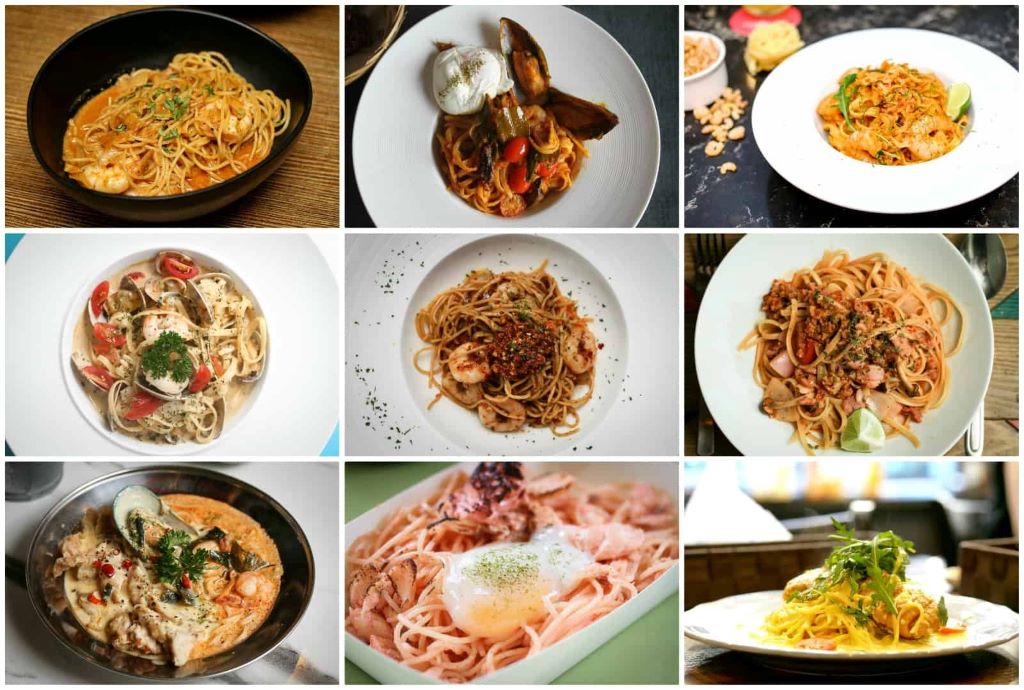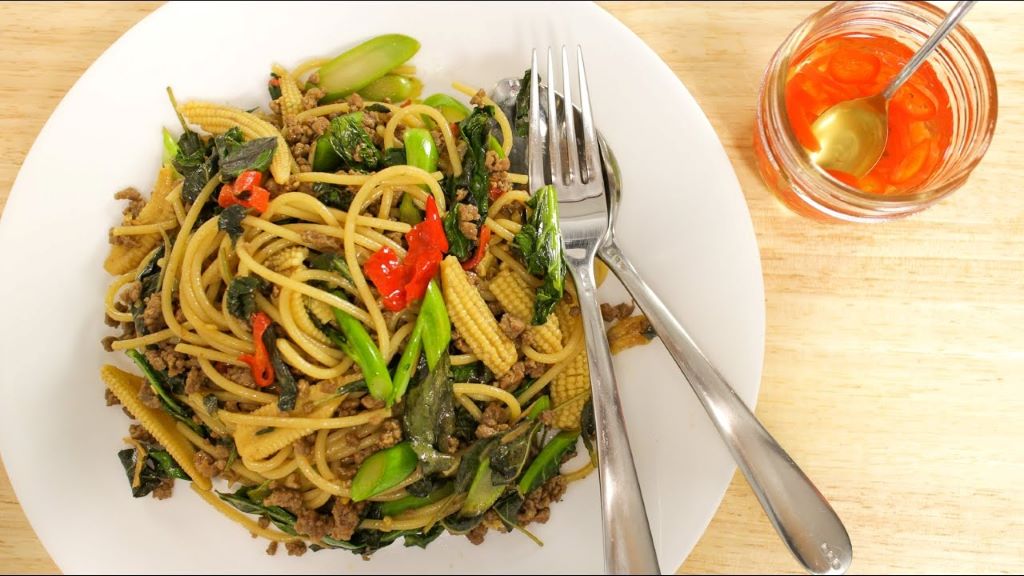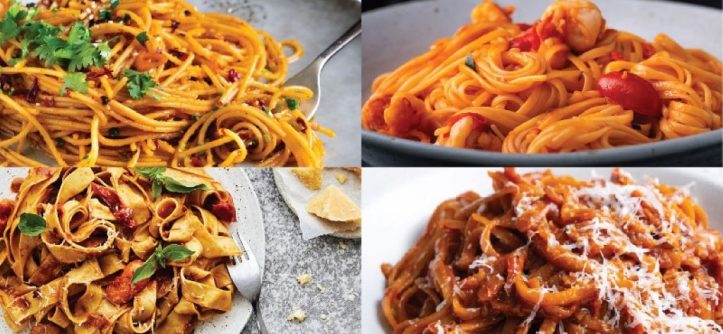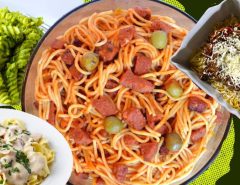Asian fusion pasta dishes represent one of the most exciting culinary trends sweeping kitchens worldwide. These innovative creations blend traditional Italian pasta-making techniques with bold Asian flavors, creating meals that surprise and delight. However, many home cooks remain unaware of how simple yet transformative these combinations can be. Additionally, these dishes offer endless possibilities for customization based on your taste preferences. Therefore, exploring Asian fusion pasta opens doors to a whole new world of flavors that will revolutionize your dinner routine.
Understanding the Magic Behind Asian Fusion Pasta Revolution
The concept of Asian fusion pasta emerged from immigrant communities who adapted familiar ingredients to local tastes. Moreover, this culinary evolution reflects our increasingly connected world where food boundaries blur beautifully. Contemporary chefs now embrace this fusion approach, creating dishes that honor both traditions while forging something entirely new.
Furthermore, the science behind these combinations works remarkably well. Asian ingredients like soy sauce, miso, and fish sauce contain high levels of umami compounds that enhance pasta’s natural wheat flavors. Additionally, the alkaline nature of many Asian sauces complements the acidity often found in traditional Italian preparations.
According to research published by the National Restaurant Association, fusion cuisine has grown by 67% in restaurant menus over the past five years, with Asian-Italian combinations leading this trend.

Five Essential Asian Fusion Pasta Dishes That Will Transform Your Kitchen
Miso Carbonara: The Umami-Rich Italian Classic Reimagined
This dish transforms the beloved Roman classic by incorporating white miso paste into the traditional egg and cheese mixture. The miso adds depth and complexity that elevates the entire dish beyond its original form. However, the technique remains fundamentally Italian, ensuring the pasta maintains its silky texture.
The key lies in tempering the miso with warm pasta water before combining it with eggs and parmesan. Additionally, using pancetta or guanciale maintains the dish’s Italian soul while the miso provides an unexpected umami boost. Therefore, this fusion creates harmony rather than confusion between the two culinary traditions.
Ramen Noodle Cacio e Pepe: Street Food Meets Roman Elegance
This innovative take replaces traditional spaghetti with fresh ramen noodles while maintaining the classic Roman technique. Moreover, the ramen’s alkaline properties create an even silkier texture when combined with pecorino romano and black pepper. However, timing becomes crucial since ramen noodles cook faster than traditional pasta.
The dish works because both cuisines celebrate simplicity and technique over complicated ingredients. Additionally, the starchy ramen water creates an exceptional emulsion with the cheese, resulting in a creamy sauce without any dairy beyond the pecorino. Therefore, this combination proves that great fusion respects both traditions while creating something unique.
Kimchi Aglio e Olio: Fermented Fire Meets Garlic Oil Simplicity
Traditional aglio e olio gets a Korean makeover with the addition of tangy, spicy kimchi. The fermented cabbage’s acidity cuts through the olive oil’s richness while adding layers of flavor impossible to achieve with Italian ingredients alone. However, the fundamental technique of slowly cooking garlic in oil remains unchanged.
Furthermore, kimchi’s natural fermentation provides probiotics that benefit digestive health. The dish works exceptionally well because both Korean and Italian cuisines appreciate the balance between simple ingredients and complex flavors. Additionally, the kimchi’s heat can be adjusted by choosing mild or spicy varieties to match your preference.
Thai Basil Pesto Linguine: Southeast Asian Herbs Meet Italian Technique
This variation replaces traditional basil with Thai basil, fish sauce, and lime juice while maintaining the classic pesto preparation method. Moreover, the addition of peanuts instead of pine nuts creates a creamy texture with distinctly Asian flavors. However, the fundamental technique of creating an emulsified herb sauce remains completely Italian.
The Thai basil’s anise notes provide complexity that regular basil cannot match. Additionally, fish sauce adds umami depth that enhances the overall flavor profile without overwhelming the dish’s herbal character. Therefore, this fusion creates a pesto that feels both familiar and exotic simultaneously.
Teriyaki Salmon Alfredo: Japanese Glazing Meets Italian Cream Sauce
This dish combines Japanese teriyaki-glazed salmon with traditional Italian alfredo sauce, creating a rich and satisfying meal. The teriyaki’s sweet-savory profile complements the alfredo’s creamy richness perfectly. However, the key lies in balancing the sauce ratios to prevent either flavor from dominating.
Moreover, the salmon provides high-quality protein and omega-3 fatty acids, making this fusion dish both delicious and nutritious. The teriyaki glaze caramelizes beautifully when broiled, adding textural contrast to the smooth pasta and sauce combination. Additionally, garnishing with scallions and sesame seeds provides color and additional flavor layers.
Essential Ingredients Every Asian Fusion Pasta Enthusiast Should Stock
Creating exceptional Asian fusion pasta dishes requires building a well-stocked pantry that bridges both culinary traditions. However, you don’t need every exotic ingredient immediately. Additionally, starting with versatile basics allows you to experiment gradually while building confidence with these flavor combinations.
Pantry Staples for Asian Fusion Success
- Soy sauce varieties: Light, dark, and premium aged versions each serve different purposes
- Miso paste: White and red miso provide different flavor intensities and applications
- Rice wine vinegar: Essential for balancing rich pasta sauces with bright acidity
- Sesame oil: Toasted varieties add nutty depth to finished dishes
- Fish sauce: Provides umami depth that enhances rather than overpowers
- Sriracha or gochujang: Heat sources that add complexity beyond simple spiciness
- Fresh ginger and garlic: Foundation flavors that appear in countless combinations
Fresh Ingredients That Make the Difference
Quality fresh ingredients elevate Asian fusion pasta from good to extraordinary. Moreover, these items often appear in both Asian and Italian cooking, making them versatile investments. Therefore, prioritizing freshness in these key ingredients pays dividends in every dish you create.
Fresh herbs like Thai basil, cilantro, and scallions provide brightness that dried alternatives cannot match. Additionally, quality proteins like fresh seafood, premium cuts of pork, or organic tofu ensure your fusion dishes taste restaurant-quality at home.
Mastering Techniques That Bridge Two Culinary Worlds Successfully
The secret to exceptional Asian fusion pasta lies in understanding techniques from both traditions. However, this doesn’t mean combining every technique in every dish. Additionally, respecting the fundamental principles of each cuisine creates more harmonious results than random experimentation.
Italian Techniques That Enhance Asian Flavors
Proper pasta cooking techniques remain crucial regardless of the sauce’s origin. Moreover, understanding how to create stable emulsions helps Asian sauces coat pasta properly. Therefore, mastering these basics ensures your fusion dishes succeed technically and flavorfully.
The pasta water’s starch content becomes even more important when working with Asian sauces that may lack traditional Italian binding agents. Additionally, timing the combination of hot pasta with room-temperature Asian ingredients requires practice to achieve optimal results.
Asian Techniques That Elevate Italian Foundations
Asian stir-frying techniques can transform simple pasta preparations into complex flavor experiences. However, adapting high-heat cooking methods to pasta requires understanding how different noodle types respond to intense heat. Additionally, the order of ingredient addition becomes crucial when combining volatile Asian aromatics with cooked pasta.
Furthermore, Asian marinating techniques can enhance proteins destined for pasta dishes. The acids and enzymes in many Asian marinades tenderize meats while infusing flavors that complement rather than compete with pasta preparations.
Health Benefits Hidden Within These Delicious Asian Fusion Combinations
Asian fusion pasta dishes often provide superior nutritional profiles compared to traditional Italian preparations. However, this depends heavily on ingredient choices and preparation methods. Additionally, many Asian ingredients offer unique health benefits that enhance the meal’s overall nutritional value.
According to the American Journal of Clinical Nutrition, incorporating fermented foods like kimchi or miso into regular meals can improve digestive health and boost immune system function by up to 25%.
Nutritional Advantages of Fusion Ingredients
Many Asian ingredients used in pasta fusion contain antioxidants, probiotics, and beneficial compounds rarely found in traditional Italian cooking. Moreover, ingredients like ginger and garlic provide anti-inflammatory properties that enhance the meal’s health benefits. Therefore, these fusion dishes can be both indulgent and nutritious when prepared thoughtfully.
Fermented ingredients like miso and kimchi provide probiotics that support digestive health. Additionally, many Asian vegetables used in pasta dishes offer higher vitamin and mineral content than their European counterparts.
Common Mistakes People Make When Creating Asian Fusion Pasta
Even experienced home cooks make predictable errors when attempting Asian fusion pasta for the first time. However, understanding these common pitfalls helps you avoid disappointing results. Additionally, learning from others’ mistakes accelerates your own fusion cooking success.
Flavor Balance Missteps That Ruin Great Dishes
- Over-salting: Asian ingredients often contain high sodium levels that require sauce adjustments
- Ignoring acidity balance: Fusion dishes need acid to brighten heavy Asian flavors
- Wrong pasta shapes: Not all Asian sauces work well with every pasta type
- Temperature mistakes: Asian ingredients often require different temperature handling than Italian ones
- Timing errors: Combining hot and cold elements requires precise timing for optimal results
Technical Errors That Prevent Fusion Success
Many fusion failures result from misunderstanding how Asian and Italian techniques interact. Moreover, assuming that combining good ingredients automatically creates good dishes leads to disappointing results. Therefore, practicing individual techniques before attempting complex fusions improves your success rate significantly.
Personal Story: My Journey Into Asian Fusion Pasta Discovery
Three years ago, I discovered Asian fusion pasta completely by accident while trying to use leftover kimchi. However, that first experimental dish of kimchi carbonara opened my eyes to endless possibilities. Additionally, friends and family became eager taste-testers as I developed new combinations each week.
The breakthrough came when I stopped thinking about fusion as addition and started considering it as translation. Moreover, understanding how flavors communicate across cultures helped me create dishes that felt cohesive rather than chaotic. Therefore, this mindset shift transformed my approach to fusion cooking entirely.

Tips for Creating Your Own Asian Fusion Pasta Masterpieces
Developing personal Asian fusion pasta recipes requires patience, experimentation, and willingness to embrace occasional failures. However, following systematic approaches increases your success rate significantly. Additionally, keeping detailed notes helps you replicate successful combinations and avoid repeating mistakes.
Start Simple and Build Complexity Gradually
- Master one fusion combination before attempting complex multi-element dishes
- Taste frequently throughout the cooking process to understand flavor development
- Keep traditional techniques as your foundation while gradually introducing Asian elements
- Document successful ratios and timing for future reference
- Don’t be afraid to adjust seasoning multiple times during cooking
Advanced Techniques for Experienced Home Cooks
Once you’ve mastered basic fusion principles, advanced techniques can elevate your dishes to restaurant quality. Moreover, understanding professional kitchen methods helps you achieve consistent results at home. Therefore, investing time in learning these skills pays dividends in every fusion dish you create.
Conclusion: Embracing the Future of Fusion Cooking
Asian fusion pasta dishes represent more than just trendy cooking – they embody our evolving relationship with food and culture. These innovative combinations prove that respecting traditions while embracing creativity leads to extraordinary culinary experiences. However, success requires understanding both Asian and Italian fundamentals rather than randomly combining ingredients.
Moreover, these dishes offer practical solutions for busy home cooks seeking exciting meals without complicated preparations. The versatility of Asian fusion pasta means you’ll never run out of new combinations to explore. Additionally, sharing these creations with friends and family creates memorable dining experiences that bring people together. Related Topics: Best Spaghetti Pasta: Top Picks for Perfect Italian Dishes
Therefore, embrace the adventure of Asian fusion pasta cooking. Start with simple combinations, respect both culinary traditions, and don’t be afraid to experiment. Your kitchen will never be the same once you discover how beautifully East meets West in a bowl of perfectly prepared fusion pasta.
Ready to start your Asian fusion pasta journey? Share your first attempt in the comments below, or tag us on social media with your creative combinations. Which fusion dish will you try first?
Frequently Asked Questions
What makes Asian fusion pasta different from regular pasta?
Asian fusion pasta combines traditional Italian pasta techniques with Asian flavors, ingredients, and cooking methods. This creates unique dishes that offer familiar comfort with exciting new taste profiles that traditional Italian preparations cannot achieve.
Can I use regular pasta for Asian fusion dishes?
Yes, regular Italian pasta works perfectly for most Asian fusion applications. However, some dishes benefit from using Asian noodles like ramen or udon. The key is matching the pasta shape and texture to complement your chosen Asian flavor profile.
Are Asian fusion pasta dishes difficult to make at home?
Most Asian fusion pasta dishes are actually quite simple once you understand the basic techniques. Start with easy combinations like adding soy sauce to carbonara or incorporating kimchi into aglio e olio before attempting more complex preparations.
What Asian ingredients work best with pasta?
Versatile Asian ingredients that work well with pasta include soy sauce, miso paste, sesame oil, rice vinegar, ginger, garlic, and fermented vegetables like kimchi. These provide umami, acidity, and complexity that enhance traditional pasta preparations.
How do I balance flavors in Asian fusion pasta?
Start with small amounts of Asian ingredients and taste frequently. Balance salty elements with acid, add sweetness if needed, and remember that fusion works best when neither cuisine dominates. The goal is harmony between both flavor profiles.





Leave a Reply